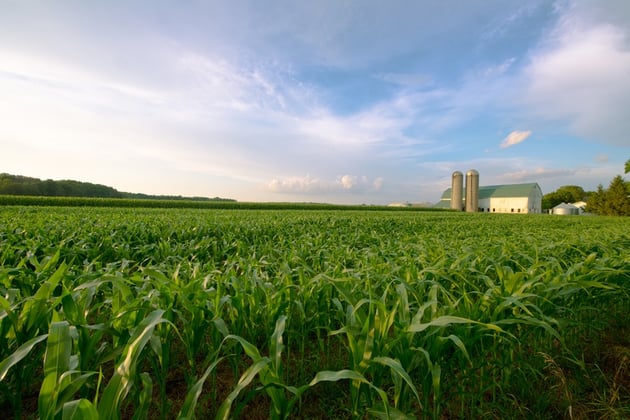Why Corn is the King of U.S. Crops
To many, the images that spring to mind when thinking of farming in America are the coveted scenes of America's pastoral heritage - the lush orange groves of Florida, the grape vineyards of California, and the pastoral apple orchards of the Northeast. Walk into the produce section of any grocery store and you will see a wide array of colorful fruits and vegetables, piled high and covered with dew as if just picked and washed—from the farm to your table. While these fruits and vegetables allude to a romantic story we commonly associate with American farming, they fail to illustrate the majesty of the true king of American agriculture: Corn.

Thanks to its high yields, ability to grow well on tens of millions of acres across the U.S., and the multitude of uses for it, Corn has become the staple crop of hundreds of thousands of American farms. In fact, according to a recent report, U.S. farmers planted 88 million acres of corn in 2015 and harvested 13.6 billion bushels of it, for a value of $49 billion.
If you need proof that this American native reigns supreme, just look at the massive size of America’s Corn Belt, which extends from western Pennsylvania to Colorado and as far north as Minnesota. There is something awe-inspiring and uniquely American about standing on a cornfield on the Great Plains and seeing a sea of corn stretching from horizon to horizon.
Corn's productivity and high yields has helped drive its dominance, but the number of uses for it has kept it at the forefront of U.S. agriculture. Surprisingly, America eats less than 10% of its corn crop—mostly in foods such as corn sweeteners, corn flour, cornmeal, hominy, grits, corn oil, and sweet corn. Corn is the engine driving America's meat industry, providing high-energy feed for hogs, chickens, and cattle. In recent years, up to 40% of our nation's corn has been processed into fuel, or bio-based fibers and plastics for use in consumer products. With many nations looking for alternatives to fossil fuels, using corn in renewable energies such as ethanol could only further cement corn’s vital role in U.S. agriculture.
Want even further proof that corn is king in the U.S.? The U.S. is the world leader by a large margin in corn production and consumption, while we're also number-one in corn export—a little over 12% of the U.S corn crop is sent to other countries. The staggering productivity of the American Heartland’s corn fields has helped make them the envy of the world. Even more impressive is that America’s two largest corn-producing states (Iowa and Illinois) account for almost a third of the country’s total corn production.
Corn plays a crucial role in the story of U.S. agriculture, from the country’s earliest beginnings, when the Native Americans taught the Pilgrims how to farm corn in the 1600s, to the future corn has in modern fuels and materials. Advanced farming practices such as reduced tillage, better irrigation, well-thought crop rotations, and refined pest management systems make corn production more sustainable, Advancements in breeding, technology, fertilizers, pesticides, and machinery—have kept U.S. corn yields rising at more than 1.8 bushels a year and have allowed the Corn Belt to expand. All of this makes corn a key part in the country's strategy to keep up with growing world demand for food and fuel and will help cement corn’s essential role in feeding and fueling the world for years to come.


